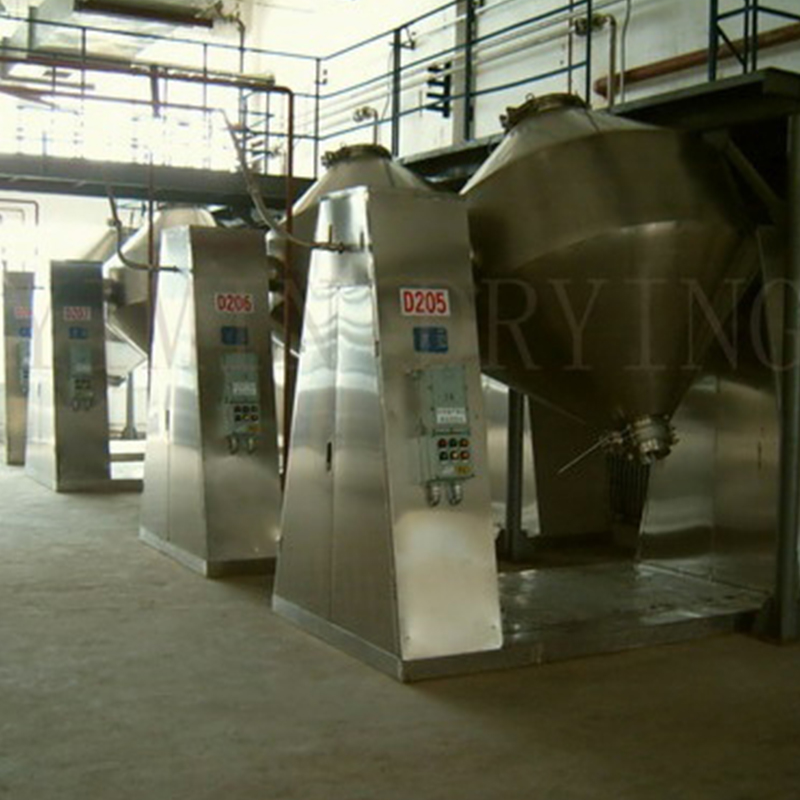How does the size and design of the vacuum dryer impact its drying capacity and efficiency
The size and design of a vacuum dryer significantly impact its drying capacity, efficiency, and overall performance. Here's how these factors play a role:
Drying Capacity
The physical size of the vacuum dryer directly affects the volume of material it can process at a time:
Larger Chamber Size: A bigger drying chamber allows for more material to be processed in each batch, increasing throughput. This is particularly beneficial for industrial-scale operations where large quantities of products need to be dried continuously.
Smaller Chamber Size: In contrast, smaller vacuum dryers are ideal for specialized or small-batch drying, where precision is more important than volume.
Surface Area and Product Loading
The design of the vacuum dryer, particularly the internal configuration, impacts the available surface area for moisture evaporation:
Tray Designs: Vacuum dryers often use trays or shelves to spread the product evenly, maximizing the surface area exposed to the vacuum environment. More trays or optimized spacing increases efficiency by promoting faster drying.
Rotary Designs: In vacuum rotary dryers, the material is agitated or rotated, further increasing the exposure to heat and vacuum, resulting in more uniform drying and faster moisture removal.
Vacuum Pump and Pressure Levels
The design and strength of the vacuum system itself play a critical role:
Efficient Vacuum Pump: A well-designed vacuum pump can create a lower pressure environment more quickly, enabling the system to reach optimal drying conditions faster. This reduces the time required for each batch and improves energy efficiency.
Pressure Control: Advanced vacuum dryers are designed with precise pressure control, allowing for adjustments that can enhance drying efficiency, especially for materials with varying moisture content or sensitivity to heat.

Heat Transfer Efficiency
The design of the heat transfer system also greatly influences drying performance:
Heat Source Positioning: Vacuum dryers are often equipped with heating mechanisms (e.g., radiant heat or conduction). Efficient placement and design of these heating elements ensure uniform temperature distribution, which is crucial for consistent drying across all products.
Double-Jacketed Chambers: Some dryers are equipped with double-jacketed chambers where heating media circulates, providing consistent heat transfer to the materials, enhancing efficiency without overheating.
Condenser and Recycling System
Vacuum dryers often include condensers to capture and recycle evaporated solvents or moisture:
Integrated Condenser: A well-designed condenser ensures that the moisture or solvents are efficiently captured and condensed, preventing the vacuum pump from working harder than necessary, which in turn improves overall energy efficiency.
Recycling Systems: If designed with a recycling system, the dryer can reuse valuable solvents, reducing waste and increasing operational efficiency.
Automation and Control Systems
Modern vacuum dryers come with sophisticated control panels and automation, which can drastically improve drying efficiency:
Automated Control: Precision control of vacuum levels, temperature, and drying time ensures the drying process is optimized for each material type, reducing human error and improving consistency.
Real-time Monitoring: Designs that incorporate sensors for real-time moisture content measurement can further optimize the process by automatically adjusting parameters to minimize drying times while maintaining quality.
Energy Efficiency
The size and design also impact energy usage:
Larger Systems: Bigger systems may require more energy to heat and maintain the vacuum, but efficient design choices, like proper insulation or heat recovery systems, can mitigate this.
Compact Systems: Smaller, well-insulated dryers tend to be more energy-efficient, especially when paired with advanced controls that minimize waste and optimize heat distribution.
In summary, the size and design of the vacuum dryer influence its capacity, drying speed, energy consumption, and ability to maintain product quality. Properly balancing chamber size, heat transfer efficiency, and vacuum pump performance is key to maximizing both drying capacity and overall efficiency.



 English
English русский
русский عربى
عربى Türk
Türk




